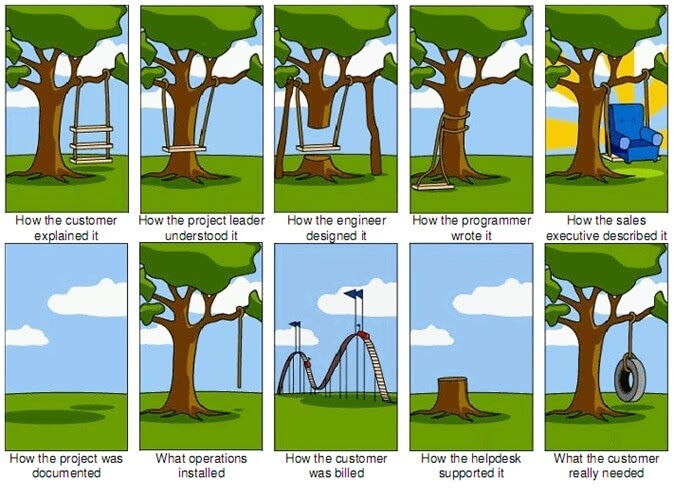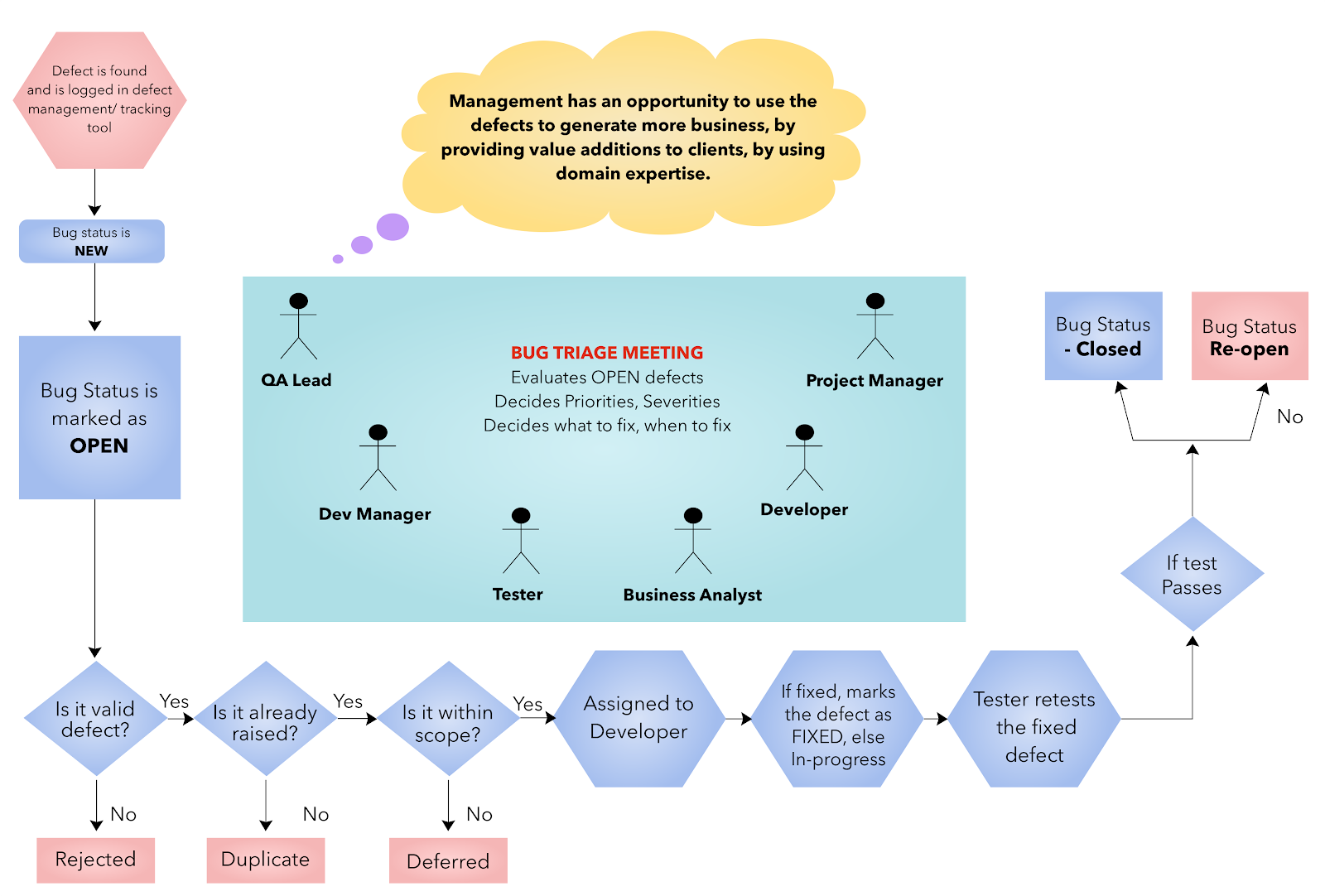
Software Defect Life Cycle – Problems, Solutions and a way to bring more business
Enhancing Software Quality Through an Effective Defect Life Cycle
Understanding the Software Defect Life Cycle
Learn how the software defect life cycle can bring more business.
A defect is a deviation from the actual requirement, ranging from the background color to an unexpected flow. A defect can be an error or a bug, which was missed at the initial requirement gathering, or functional or might be related to user experience. To remove that defect, let’s understand that “a defect itself has its life cycle starting from its creation to closure.”
Before reaching the software defect life cycle, there is an initial requirement-gathering stage where maximum defects can be fixed or analyzed. All it needs is proper communication and understanding of the product between clients, developers, business analysts, and other stakeholders.
The Role of Effective Communication in Reducing Defects
The below image summarizes the whole story from the requirement gathering stage to the final delivery of the product. It shows how the customer explained the requirement, how the project leader conceptualized it, how engineers and designers worked on designing and writing code, and what the customer needed.
The cost of defect fixing rises from its requirement-gathering phase to the final product.

From the above image, we can conclude that:
- It is easier and more cost-efficient to fix defects by analyzing them from the initial stage of gathering business requirements.
- Better communication can bridge the gap between different teams, reducing misunderstandings.
- A streamlined defect life cycle ensures that businesses maintain quality and customer satisfaction.
Defect Life cycle process-
Now fix defects by following this defect life cycle process

Also, during the test execution phase, the following participants are also involved who decide on defects from being logged to Defect Triage meetings.
-
Project Manager
-
Test Lead
-
Development Lead or Developer
-
Tester
-
Test Manager
-
Business Analyst
-
Environment Manager
The entire team is called the Triage Team.
From the flowchart, the flow of the defect can be seen as:
- At the initial stage, a NEW DEFECT is found by the Tester/Defect Owner and is created with a NEW STATUS.
- The QA Lead or Manager reviews the defect and assigns it to the Development Lead or Manager with the status as OPEN if valid. If not, it is sent back to the defect owner for rechecking.
- The Development Manager/Lead reviews the defect and assigns it to the concerned developer if valid. If invalid, it is rejected with a valid remark.
- If the defect is not reproducible, it is marked as NOT REPRODUCIBLE. The tester must provide additional details.
- If a similar defect has already been raised, it is marked as DUPLICATE.
- The developer fixes the bug and marks it as RESOLVED.
- The Tester retests the bug and marks it as CLOSED if fixed or REOPENED if not fixed.
- Based on severity and priority, the defect can be DEFERRED or marked as WON’T FIX if it is not crucial.
Defect Triage and Business Growth

The resolution of defects is assigned, evaluated, and prioritized by the triage team. They aim to validate the severity of the defect, make changes as per the needs, finalize resolution, and assign resources efficiently in an agile project management environment.
Problems, Solutions, and Bringing New Business
When to Fix the Defect?
During bug triage, defects are prioritized. If a defect is of low importance, it is deferred. Using domain knowledge, businesses can provide better solutions, thus targeting more business opportunities.
Is It Worth Fixing the Defect?
Sometimes, fixing a defect can introduce more defects. If the defect is of low priority, the team may decide to fix it later, saving time and cost. Here, domain experts can offer alternative business solutions.
Resolving Conflicts Between Development and QA Teams
Conflicts between developers and testers are common when opinions differ on whether something is a defect. Management plays a crucial role in providing the best solution while adhering to business logic.
The Role of Software Testing as a Service in Quality Assurance
With modern business requirements evolving rapidly, Software Testing as a Service ensures continuous improvement and software reliability. Businesses can leverage outsourced testing teams to conduct in-depth quality analysis, identify defects early, and streamline the defect life cycle.
Adding Business Value Through the Defect Life Cycle
Businesses grow with value additions. Management can view defect-related suggestions as an opportunity to influence clients with better solutions, generating more business.
Due to ambiguous or incomplete requirements, certain modules may have more defects. With domain knowledge and market insights, management can suggest better solutions, influence clients with an accurate vision, and enhance business growth.
By optimizing the defect life cycle, businesses can reduce costs, improve product quality, and establish long-term customer trust.